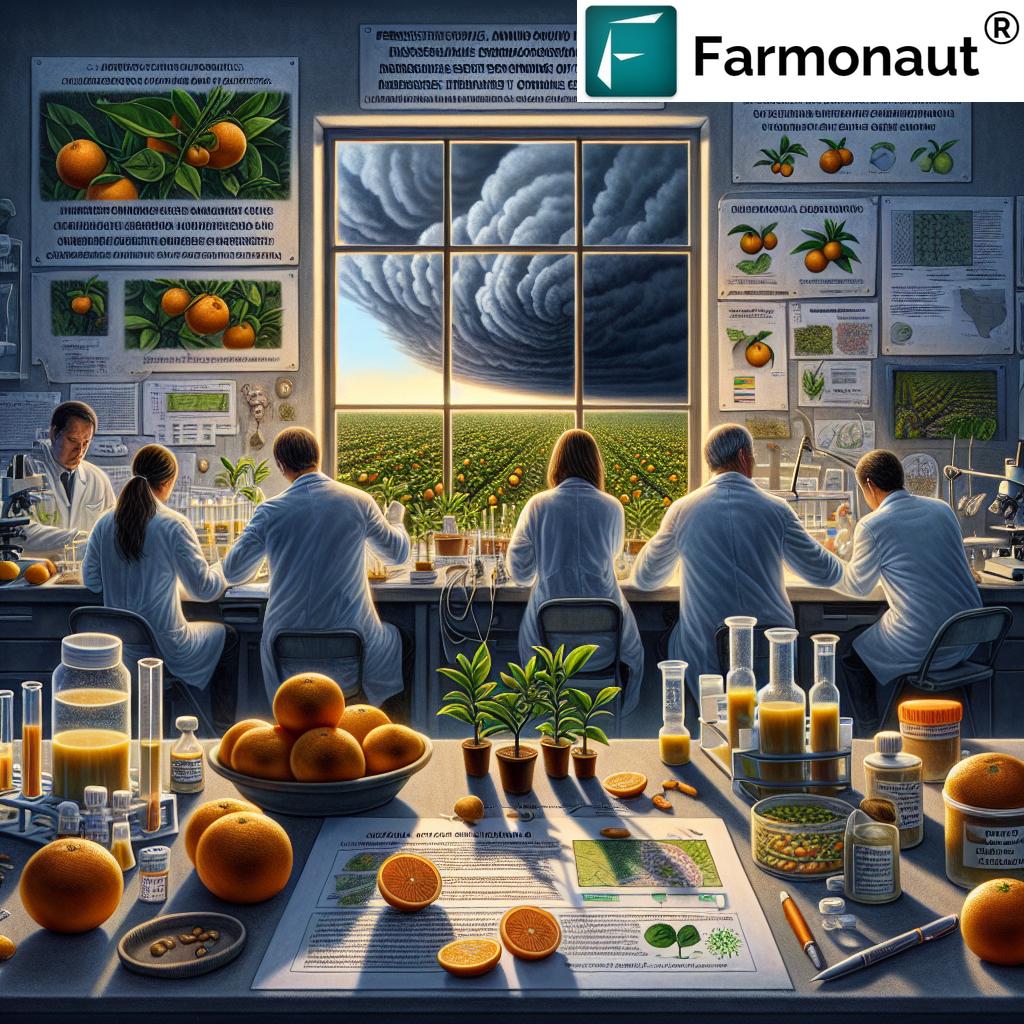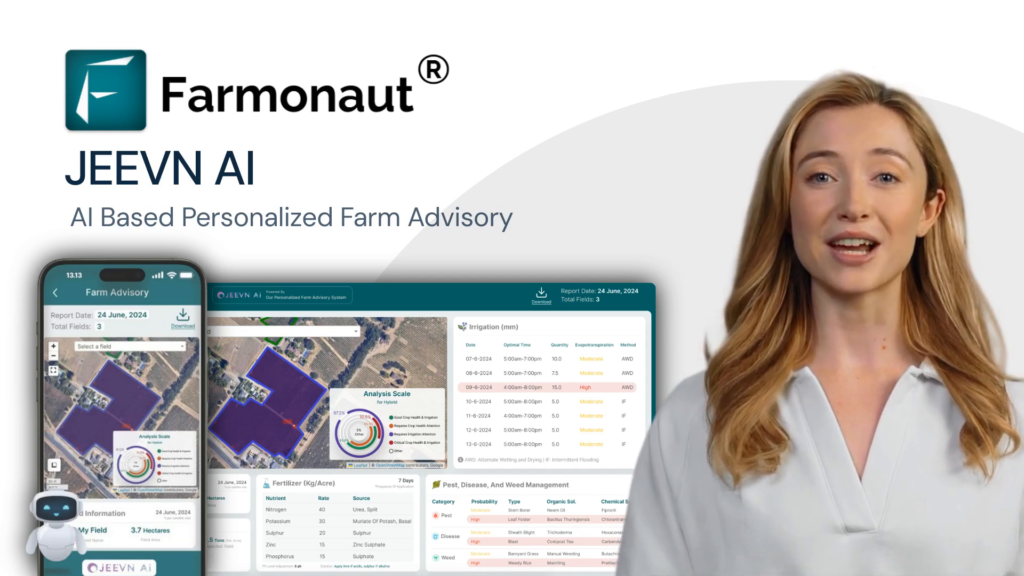Florida Orange Juice Industry Challenges & Solutions
Introduction: Understanding Florida’s Citrus Crisis
Florida’s orange juice industry stands as an enduring symbol of our state’s agricultural wealth and cultural identity. For decades, citrus groves have painted landscapes from Orlando to Lake Wales, fueling the economy and defining livelihoods. Yet, behind the golden glow of those fruits, our industry now faces a perplexing and critical juncture. From citrus greening disease and the impact of hurricanes on citrus, to urbanization and agricultural land loss, the problems are complex, interconnected, and urgent.
Understanding these environmental, biological, economic, and societal pressures is essential. By acknowledging the scale of the crisis and embracing data-driven, sustainable solutions, we—Florida’s growers, consumers, policy makers, and stakeholders—can sustain and revitalize this vital sector for future generations.
“Florida’s orange production dropped over 70% since 2005 due to greening disease and hurricanes.”
Florida Citrus Industry: Historical Context & Economic Importance
Citrus has shaped Florida’s identity for over a century, with orange juice production at the heart of the state’s agricultural economy. We account for the majority of U.S. orange juice, historically producing up to 90% of the domestic supply. Florida’s citrus industry once covered more than 900,000 acres, providing tens of thousands of jobs, billions in tax revenue, and supporting communities from coast to coast.
The renowned citrus groves in Florida have supplied not only the U.S. but also global markets, with a focus on juice due to the state’s sweet-valencia-oriented fruit varieties. Notably, over 90% of our oranges go directly to juice production, underscoring the need for sustainable strategies to protect this industry’s future.
Major Challenges Facing Florida’s Orange Juice Production
To sustain Florida’s citrus legacy, we must confront the multifaceted threats undermining orange juice production. These range from biological and environmental crises to market disruptions and changing consumer preferences. Let’s systematically explore the key issues.
Citrus Greening Disease (HLB / Huanglongbing)
Citrus greening disease, or huanglongbing (HLB), has emerged as the single greatest biological threat to our industry. HLB is caused by a bacterial pathogen transmitted by the invasive Asian citrus psyllid. Detection in Florida’s groves was first reported in 2005, heralding a wave of devastation with up to 90% of groves infected by 2015.
- HLB weakens citrus trees, causing mottled leaves, stunted growth, and compromised root systems.
- The fruit becomes small, misshapen, and bitter—often unharvestable for juice.
- Production costs for growers have more than doubled since its arrival.
- HLB is difficult to control or cure with existing treatments.
As a direct result, orange juice production in Florida saw a decline of over 70%. The financial impact is enormous, translating into substantial crop losses, reduced land value, and increased grove abandonment.
Impact of Hurricanes & Extreme Weather Events
Florida’s subtropical climate exposes our groves to hurricanes, tropical storms, and extreme weather. In recent years, the impact of hurricanes on citrus has intensified:
- Hurricane Irma (2017): $490 million in citrus losses, destruction of mature trees, and disruptions to replanting cycles.
- Hurricane Ian (2022): $247 million in damages, further reducing productivity.
- Additional weather events, like the 2022 freeze, compound the sector’s vulnerability.
Frequent extreme weather causes a decline in overall yield, damages to trees, delayed harvests, and erosion that threatens soil sustainability. Exacerbating the crisis, replanting efforts are often delayed by repeated weather events, leaving our industry prone to severe seasonal fluctuations.
Urbanization and Agricultural Land Loss
Florida’s surging population drives relentless conversion of agricultural land into residential and commercial properties. This dynamic presents a unique challenge:
- Urban expansion reduces available citrus acreage.
- The profitability of land sales often outweighs shrinking agricultural margins, prompting more growers to sell.
- Some estimates indicate a 75% reduction in total citrus acres in the last decade.
- This not only limits orange juice supply, but also increases food insecurity and reduces local economic resilience.
The urbanization and agricultural land loss
Economic Pressures, Imports & Market Dynamics
Declining yields and mounting costs have made the Florida citrus industry less competitive in the global and domestic marketplace:
- Increased imports from Brazil and Mexico compensate for local production decline, but those sources face similar disease and climate issues.
- Higher prices coupled with issues of flavor consistency have emerged as a result of mixing domestic and imported juices.
- Production costs—especially in disease management and post-disaster recovery—have outpaced returns for most Florida growers.
- The share of Florida orange juice in domestic markets dropped from nearly 90% to less than 50% in less than a decade.
As growers struggle to stay afloat, industry consolidation and downsizing persist, weakening our economic and social fabric in rural Florida.
The move towards carbon footprint tracking and sustainable resource management can help Florida groves reduce environmental impact, enhance compliance, and boost their eco-market credentials. With precise carbon data, growers can evaluate their climate impact and adapt more resilient operations.
Changing Consumer Preferences & Health Trends
Consumption patterns for orange juice in the United States have evolved due to:
- Growing health consciousness and concerns about sugar in fruit juices.
- The popularity of low-calorie and non-traditional beverages.
- A shift towards fresh fruits over processed juices.
This trend compounds the orange juice production decline from the supply side, particularly as alternative fruits for juice production (like mandarins) are explored for sustainable juice products. The challenge for us is to respond to shifting consumer preferences, while maintaining the authenticity, flavor, and health benefits associated with Florida OJ.
Challenges vs. Solutions in Florida’s Orange Juice Industry
To provide a concise overview, we’ve developed a comparative table outlining key challenges, their estimated impacts, sustainable solutions, and the anticipated effectiveness for the Florida citrus industry:
| Challenge | Estimated Impact | Sustainable Solution | Anticipated Effectiveness |
|---|---|---|---|
|
Citrus Greening Disease (HLB) Bacterial disease transmitted by Asian citrus psyllid; causes misshapen, bitter fruit and weak trees. |
Up to 90% infection rate. Annual yield reduction: 40-70%. Production costs doubled (2005-2015). |
|
Projected 30-50% yield recovery (with resistant cultivars & precision monitoring). Economic savings on pesticides and resource use. |
|
Citrus Crop Losses from Storms Repeated hurricanes and freezes damage groves, hinder recovery. |
$490 million loss (Irma, 2017) $247 million loss (Ian, 2022) Annual crop loss: up to 30% |
|
Environmental benefit: Improved water management. Estimated 15-20% improved yield stability during severe weather. |
|
Urbanization and Agricultural Land Loss Sale of groves for residential/commercial use, reduction of farmland. |
Up to 75% reduction in citrus acreage (last decade). Long-term risk to food security. |
|
Projected 20-30% land conservation if policies implemented. Community resilience and sustained rural economies. |
|
Economic Pressures & Imports Rising production costs, competing imports (Brazil, Mexico). |
Florida’s share in US OJ market fell from 90% to <50% (2010–2019). Higher consumer prices and inconsistent quality. |
|
10-20% projected cost savings via tech. Improved market resilience and traceability. |
|
Consumer Preferences & Health Trends Declining OJ consumption due to sugar concerns, competition. |
US OJ consumption declining annually Loss of market share to other beverages |
|
Potential for 15-25% market share recovery among health-conscious consumers Value growth via diversification |
Sustainable Solutions & Innovations to Revitalize the Sector
Meeting our challenges requires agile, multifaceted strategies anchored in scientific research, agricultural technology, responsive policy, and market adaptation. Let’s examine key solutions shaping a sustainable future for the Florida citrus industry.
Biological & Genetic Research: Disease-Resistant Citrus Trees
Central to our long-term defense against citrus greening disease is genetic innovation. Disease-resistant citrus trees, developed via selective breeding and modern genomics, offer hope for recovery:
- Researchers are pursuing rootstocks and cultivars with proven resistance or tolerance to HLB.
- Genetic modification and traditional breeding are combined with advanced biological screening techniques.
- These trees are rigorously tested for fruit quality, yield, and resilience under Florida’s climate and disease pressures.
Although these advances take time to scale, they form the backbone of sustainable orange farming and are already being trialed on a significant portion of replanted acreage.
For producers seeking scientific guidance on replanting, Farmonaut’s crop plantation & advisory system is uniquely positioned to deliver field-level insights, real-time stress detection, and expert advice for variety selection and disease management.
Agricultural Technology & Precision Solutions
Embracing advanced farm management tools has never been more crucial:
- Satellite imagery: Real-time monitoring of crop health, soil moisture, and pest outbreaks for optimized intervention.
- AI-based advisory systems: Automated, personalized strategies to address disease outbreaks, irrigation, and nutrition management.
- Resource management: Smart irrigation, nutrient management, and cost tracking for improved operational efficiency.
Farmonaut leads with large-scale farm management
systems, supporting groves of all sizes with platform-accessible (Web, Android, iOS) insights, yield estimations, and operational analytics. Their
fleet management tools ensure optimized logistics and cost savings for large citrus operations.
For citrus growers interested in leveraging satellite data or APIs for custom integration, Farmonaut’s API documentation is available here: API Access | Developer Docs
Climate-Resilient Farming & Disaster Management
Mitigating the effects of hurricanes and extreme weather on citrus crops is a top priority:
- Deploying climate-resilient tree varieties and rootstocks that withstand flooding, drought, and disease.
- Water management innovations to protect against both drought and excess rainfall.
- Early warning systems (including satellite-based weather prediction) and disaster recovery protocols.
Further, investing in infrastructure and fleet management strengthens post-storm responses and speeds up replanting/repair of groves.
Land Policy, Urban Management & Government Support
Sustaining production requires protecting agricultural land from unchecked urbanization:
- Governments can implement zoning policies, agricultural easements, and incentives for growers to maintain citrus production.
- Supporting research funding to combat HLB and disaster insurance programs for growers.
- Marketing and promotional efforts to boost demand for Florida-branded products.
Policy leadership ensures the continued viability of Florida’s rural economy and preserves land for future generations.
Market Adaptation: Alternative Fruits & Product Innovations
As citrus groves in Florida face continued volatility, diversifying into alternative fruits for juice production—notably mandarins—may provide resilience:
- Mandarin trees are more tolerant of HLB and variable weather.
- Innovation with juice blends, low-sugar varieties, and other value-added citrus products can address evolving consumer tastes.
- Enhanced traceability, such as with blockchain-based product tracking, reassures consumers of authenticity and quality.
Adaptability to consumer and global market trends boosts the sustainability and relevance of Florida’s orange juice sector.
Consumer Education, Health, and Marketing
A rejuvenated industry must reconnect with the modern consumer by:
- Communicating the health benefits of 100% orange juice (vitamins, antioxidants, hydration).
- Highlighting sustainability credentials, local sourcing, and the support of Florida jobs.
- Utilizing transparent supply chains (via tools like product traceability) and targeted marketing campaigns.
These strategies aim to reverse the decline in juice consumption and restore our iconic product’s market share.
“Over 90% of Florida’s oranges are used for juice, making sustainable solutions vital for industry survival.”
Farmonaut’s Role in Sustainable Orange Farming for Florida
To achieve true sustainability and resilience in Florida citrus, we must harness technology that enables smarter, faster, and more precise farming. Farmonaut is at the forefront of this transformation, bridging tradition and innovation.
- Crop Health Monitoring & AI Insights: Satellite imagery and AI-driven analytics help us monitor tree stress, early signs of HLB, and impacts of adverse weather, enabling proactive intervention and resource efficiency.
- Blockchain-Based Traceability: From grove to glass, Farmonaut’s blockchain solutions foster trust and authenticity in juice products, opening new markets and promoting sustainable practices (read more).
- Carbon Footprinting and Resource Optimization: Real-time carbon and environmental data help us adopt climate-smart management, fulfill eco-labeling requirements, and reduce operational costs (learn more).
- Accessible & Affordable Precision Tools: Whether managing a family grove or a commercial estate, Farmonaut’s apps and platform put state-of-the-art farm management in every grower’s hand.
- Financial Access via Crop Loan & Insurance Verification: By offering satellite-based verification for loans and insurance, the platform helps us secure the financing needed for grove recovery and modernization, reducing fraud and streamlining approvals.
Farmonaut supports stakeholders throughout the orange juice supply chain—growers, agribusinesses, policy makers, financial institutions, and corporate clients—with scalable, affordable, and impactful technology.
Farmonaut Subscription Plans
Farmonaut’s precision agriculture subscriptions offer flexible, scalable pricing for citrus farms, agribusinesses, and institutional clients. Choose real-time satellite monitoring, custom advisories, supply chain traceability, and more—accessible on web, Android, and iOS.
Frequently Asked Questions (FAQ)
Q1: What is citrus greening disease (HLB) and how does it impact Florida orange juice production?
Citrus greening disease, or huanglongbing (HLB), is a bacterial infection transmitted by the Asian citrus psyllid. It weakens trees, reduces fruit quality and yield, and makes much of the harvest unfit for juice. Since its detection in Florida in 2005, it has devastated up to 90% of citrus groves and contributed to a massive reduction in orange juice production.
Q2: How do hurricanes and extreme weather threaten the Florida citrus industry?
Hurricanes cause widespread physical damage—uprooting trees, destroying crops, and eroding groves. Multiple recent storms (like Irma in 2017 and Ian in 2022) led to hundreds of millions in losses and delayed grove recovery, compounding the orange juice production decline.
Q3: Can urban growth and real estate development be balanced with agricultural sustainability?
Yes, with strong land use policies, zoning regulations, and incentives for preserving agricultural land, urban expansion and sustainable farming can coexist. Protecting groves from conversion to commercial or residential use is critical for economic stability, food security, and environmental resilience.
Q4: What sustainable solutions offer the most promise for reviving Florida’s orange juice sector?
A combination of disease-resistant tree breeding, smart farming technology (e.g., Farmonaut’s satellite and AI monitoring), disaster preparedness, government support, and market innovation—including alternative fruits—holds the most promise.
Q5: How can citrus growers leverage technology like Farmonaut for better crop health and sustainability?
Crop health monitoring via satellite, AI-based pest and irrigation advisories, blockchain traceability, and carbon footprinting all empower growers to make informed, efficient, and sustainable decisions. These tools also enhance market access and operational resilience.
Q6: Where can I learn more about Farmonaut’s products?
Explore the Farmonaut App for real-time crop and grove management, or read about carbon footprinting solutions,
product traceability, and sector-specific tools for crop loan and insurance verification and fleet management.
Conclusion: Revitalizing Florida’s Citrus Legacy
Florida’s orange juice industry stands at a pivotal crossroads. The interplay of disease, hurricanes, urbanization, economic pressures, and evolving consumer preferences has resulted in a multifaceted crisis that threatens our agricultural heritage and economic vitality. However, with a clear understanding of these challenges and collective commitment to sustainable, innovative solutions, we can chart a path towards resilience and renewal.
- Continued investments in disease research, climate adaptation, and technology are vital for combating the spread of greening and fortifying our groves against storms.
- Policy frameworks must prioritize the protection of agricultural land and incentivize sustainability.
- Embracing precision agriculture tools like Farmonaut empowers all growers with affordable access to real-time, actionable insights, driving higher yields and lower resource usage.
- Market and consumer innovations—from low-sugar juice formulations to transparent traceability—reinvent Florida OJ for a new generation.
By working together—growers, researchers, technology providers, policymakers, businesses, and consumers—we can sustain and revitalize this vital sector, ensuring that Florida’s citrus groves and orange juice remain symbols of sustainability and economic prosperity for years to come.

















